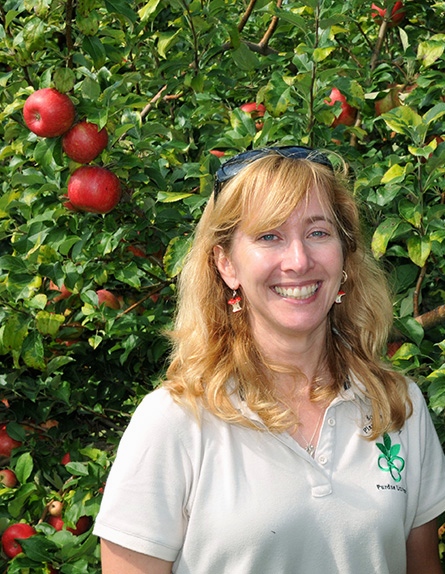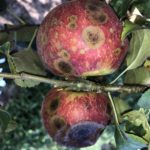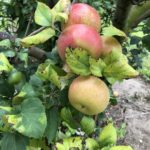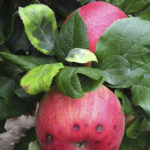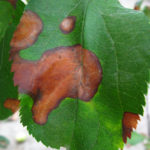Just like other commodities, “generic” versions are increasingly available for many common fungicides as patents expire on various proprietary active ingredients. By law, generic products must contain the same amount of active ingredient as the original fungicides, but the formulation may be different. As a result, confusion continues as formulation of a fungicide is proprietary[Read More…]
The University of Minnesota Department of Horticultural Science takes a fresh, encouraging new look at growing fruit in the home garden. This guide will help gardeners decide which fruits are right for their gardens and their lifestyles, taking readers through every step from planning, choosing cultivars, and planting, to harvesting and pruning. Readers will find information on[Read More…]
As harvest continues, so does the summer rot saga, especially bitter rot. Multiple orchards are reporting significant to complete loss of Honeycrisp throughout the Midwest, in addition to other varieties. Honeycrisp is by far the worst hit, but its seems that Golden Delicious, Granny Smith, Cameo, Ida Red, Empire, Fuji and Gala have had problems[Read More…]
Susan Brown of Cornell probably said it best: “The performance and attributes of Honeycrisp are varied and can be grouped under the heading, ‘The good, the bad, and the ugly.’ The ‘good’ refers to a great name for marketing and excellent texture, crispness, and juiciness. The ‘bad’ refers to coloring problems, appearance defects, and susceptibility[Read More…]
With weird weather often comes weird physiological disorders (on top of our summer fruit rots). Often confused with hail injury, disease or insect damage, these physiological disorders are marring the appearance of many apples. Symptoms of bitter pit include circular or even irregular sunken spots on the fruit surface, beneath brownish or streaked dead regions[Read More…]
Stone Fruit: At our orchard, we lost our stone fruit with the -20 degree F temperatures this winter. For those of you fortunate enough to have fruit, frequent and heavy rain present problems multiple problems, namely bacterial spot and brown rot. Three weeks before harvest, cease bacterial spot sprays, even though bacterial spot may continue[Read More…]
Glomerella leaf blight seems to be rearing its ugly head. Symptoms include lesions with concentric rings in them that can grow together and give the leaf a blighted appearance (Fig. 1). Leaves may yellow and fall off (Fig. 2) and may appear like Golden Delicious necrotic leaf blotch on a variety of apple cultivars (Fig.[Read More…]
Diseases that affect the twigs, branches, and the main trunk of a tree are referred to as cankers or blights. Canker diseases can be a serious problem in the orchard, vineyard, berry or bramble patch when they are not properly managed, and even when they are. All woody plants can be infected by canker pathogens.[Read More…]
Those of you lucky enough to still have a crop. Drier than usual weather means the risk of scab and bacterial diseases is low, but powdery mildew is higher. Although Rally and Topguard provide excellent control of powdery mildew, Flint extra, Luna Sensation and Merivon all provide excellent control of not only powdery mildew, but[Read More…]
From one of the coldest Aprils to one of the hottest Mays, what will June bring us? So far, apple scab has been less of a problem than usual, but powdery mildew seems to flying under the radar for many orchards. Keep your eyes out for the characteristic leaf curl (Fig.1). Varieties like Jonathan, JonaGold,[Read More…]
